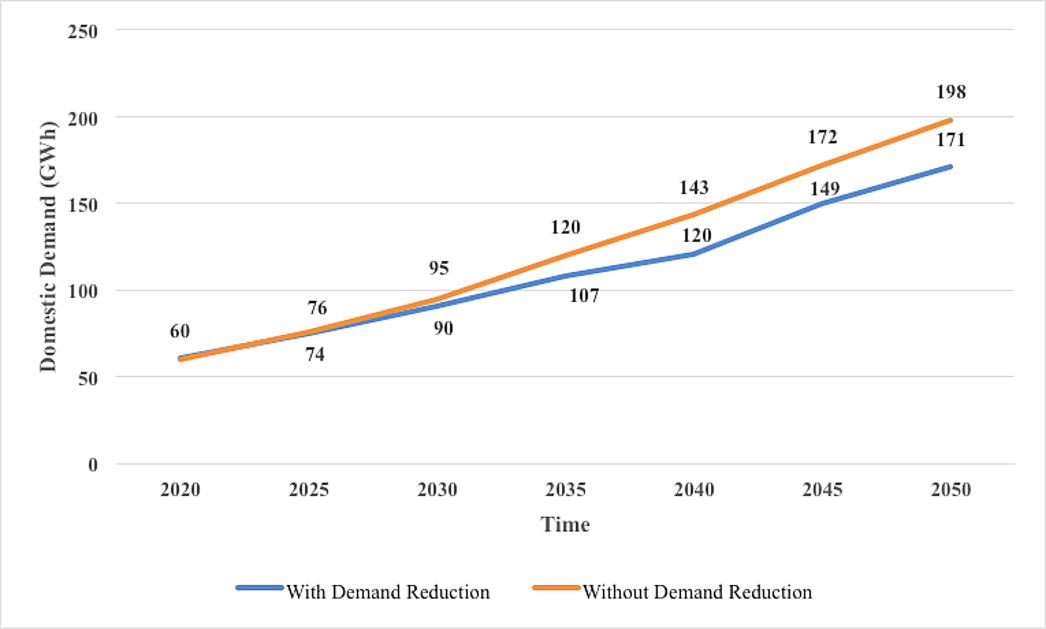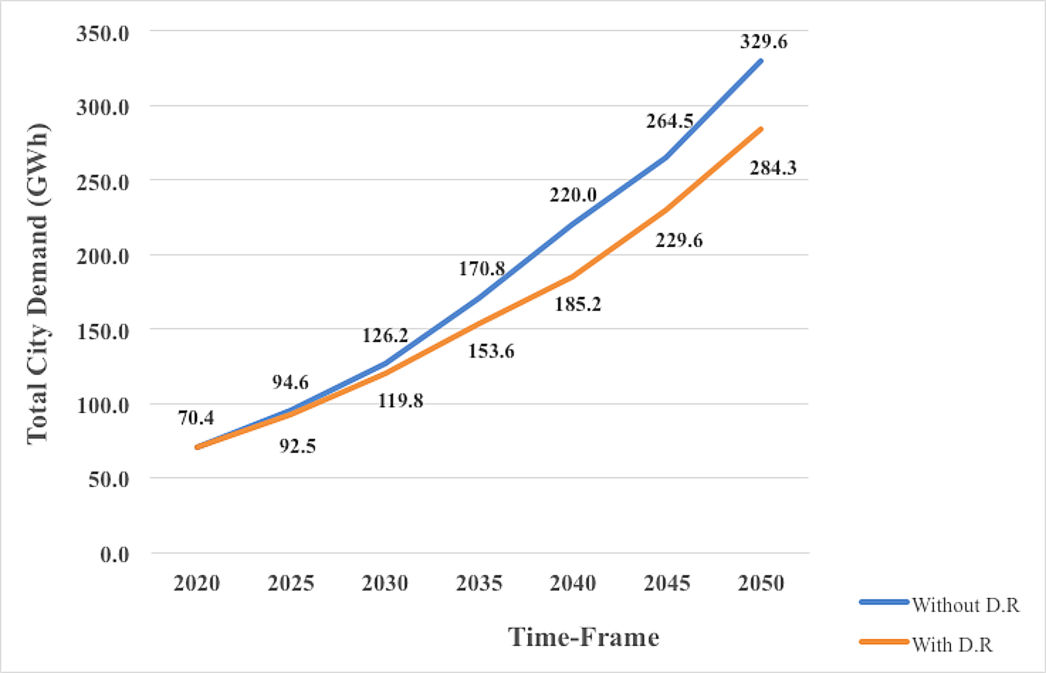
To obtain the impact on domestic demand reduction on a city-scale perspective, the cumulative annual electricity consumption totals of the house-group split for each year of interest [2020, 2025 etc up until 2050], were gathered. This was performed for the original case without any demand reduction measures being implemented, and then subsequently for the case in which they were.
These results were compared against the prescribed timeframe to 2050, and the results displayed that there was a 30 GWh net reduction in domestic demand with the proposed measures in 2050 (see Figure 1).

Altogether this results in the total city demand being reduced steadily over time, from e.g. in 2050, 330 GWh approx. to 285 GWh approx., a reduction of approx. 15% (refer to Figure 2). This reduction in peak demand achieved through simple reduction measures targeting the domestic sector, therefore makes the city supply target more feasibly achievable and hence more reliable in the long-term.
